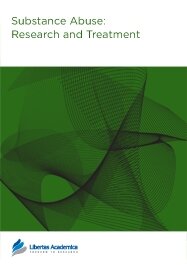

Publication Date: 26 Aug 2008
Journal: Substance Abuse: Research and Treatment

1Addiction Pharmacology Research Laboratory, St. Lukes Hospital, 7th floor, 3555 Cesar Chavez Street, San Francisco, CA 94110. 2The MayaTech Corporation, 1100 Wayne Avenue, Suite 900, Silver Spring, MD 20910. 3The Methamphetamine Treatment Project Corporate Authors: M. Douglas Anglin, Richard A. Rawson, Patricia Marinelli-Casey, Joseph Balabis, Richard Bradway, Alison Hamilton Brown, Cynthia Burke, Darrell Christian, Judith Cohen, Florentina Cosmineanu, Alice Dickow, Melissa Donaldson, Yvonne Frazier, Thomas E. Freese, Cheryl Gallagher, Gantt P. Galloway, Vikas Gulati, James Herrell, Kathryn Horner, Alice Huber, Martin Y. Iguchi, Russell H. Lord, Michael J. McCann, Sam Minsky, Pat Morrisey, Jeanne Obert, Susan Pennell, Chris Reiber, Norman Rodrigues, Janice Stalcup, S. Alex Stalcup, Ewa S. Stamper, Janice Stimson, Sarah Turcotte Manser, Denna Vandersloot, Ahndrea Weiner, Kathryn Woodward, Joan Zweben,
Abstract
Aims: This study lays the foundation for a clinical prediction model based on methamphetamine craving intensity and its ability to predict the presence or absence of within-treatment methamphetamine use.
Design: We used a random effects logistic approach for estimating repeated-measures, generalized linear mixed models (GLMM) using craving as the sole predictor of methamphetamine. A multivariate GLMM included craving, length of treatment, treatment assignment, and methamphetamine use the previous week as covariates to control for potential confounds. We performed receiver operating characteristic (ROC) analyses to evaluate predictive accuracy. We investigated further whether methamphetamine craving predicted subsequent use more accurately at intervals more proximal to versus those more distal to assessment, examining one-week periods ending one to seven weeks after assessment of craving.
Setting: The study was part of the Center for Substance Abuse Treatment (CSAT) Methamphetamine Treatment Project (MTP).
Subjects: Analyses were based on data from 691 methamphetamine dependent outpatients enrolled in the MTP.
Measurements: Craving was assessed by self-report on a 0–100 scale. Self-reported methamphetamine use was toxicologically verified. Craving and drug use were assessed weekly for 8 weeks.
Findings: In the univariate analysis craving predicted methamphetamine use in the week immediately following the craving report (p <0.0001), with subject-specific use increasing 0.38% for each one-point increase in craving on a 0–100 scale. In the multivariate analysis the probability of use decreased by 2.45% for each week in treatment, increased by 33.11% for previous methamphetamine use, and the probability of methamphetamine use still increased with craving, rising 0.28% for each one-point increase in craving score (all p <0.0001). Predictive accuracy was strongest at the one-week time-lag and declined in magnitude the more distal the assessment period.
Conclusions: Craving is a predictor of within-treatment methamphetamine use. Intensity of craving is appropriate for use as a surrogate marker in methamphetamine dependence.
PDF (759.11 KB PDF FORMAT)
RIS citation (ENDNOTE, REFERENCE MANAGER, PROCITE, REFWORKS)
BibTex citation (BIBDESK, LATEX)
I very much enjoyed the experience of publishing with Substance Abuse: Research and Treatment. The editorial and review staff were very helpful and understanding throughout, even when a very large and complex project was being undertaken, and a range of subjects had to be reviewed. The editor was sympathetic and understanding of the author's responses, and this combined and coordinated interplay has allowed major conceptual advances to be made with major implications for the improvement ...

All authors are surveyed after their articles are published. Authors are asked to rate their experience in a variety of areas, and their responses help us to monitor our performance. Presented here are their responses in some key areas. No 'poor' or 'very poor' responses were received; these are represented in the 'other' category.See Our Results
Copyright © 2013 Libertas Academica Ltd (except open access articles and accompanying metadata and supplementary files.)
FacebookGoogle+Twitter
PinterestTumblrYouTube